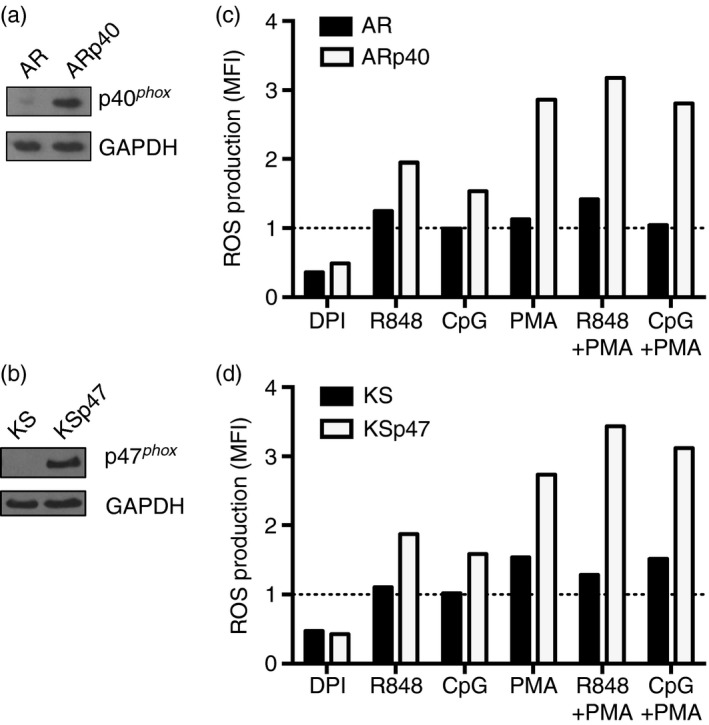Figure 1.

Decreased reactive oxygen species (ROS) production after Toll‐like receptor 7 ( TLR7) or TLR9 stimulation in NADPH oxidase‐deficient B‐cell lines. (a) AR, a B‐cell line derived from a patient with mutations in both paternal and maternal alleles of p40phox and ARp40, the AR cell reconstituted with wild‐type p40phox, were lysed and the lysates were immunoblotted to detect p40phox and GAPDH proteins. (b) Cell lysates from KS, a B‐cell line derived from a patient lacking functional p47phox and KSp47, the KS B‐cell line reconstituted with p47phox, were immunoblotted to detect p47phox and GAPDH proteins. (c,d) ROS production by B cells was monitored after a 30‐min treatment with diphenyleneiodonium (DPI), R848, CpG and/or PMA and a 10‐min incubation with 2′7′‐dichlorodihydrofluorescein diacetate (H2 DCFDA) as described in the Materials and methods. Mean fluorescence intensity (MFI) was detected by flow cytometry and plotted as a ratio to the MFI of cells treated with H2 DCFDA alone which was set to one (dashed line). Data shown in (c) and (d) represent one of three independent experiments.
